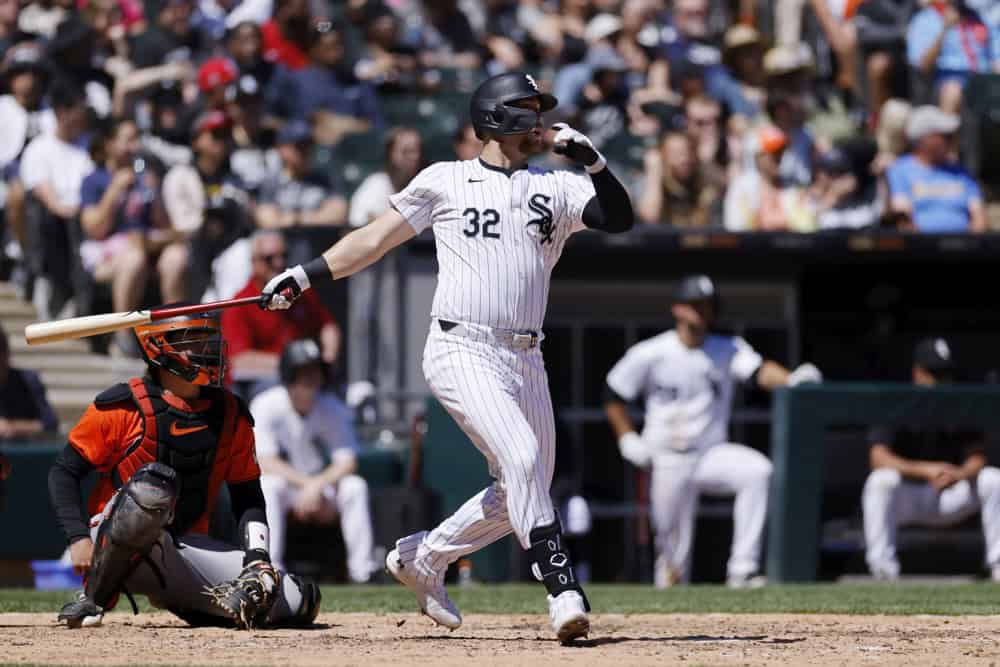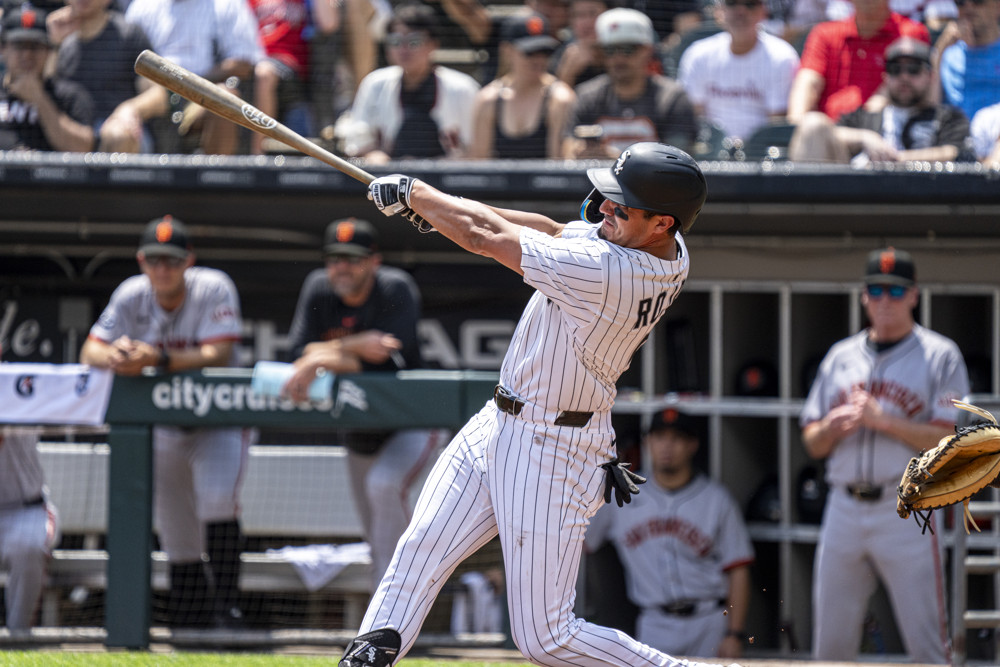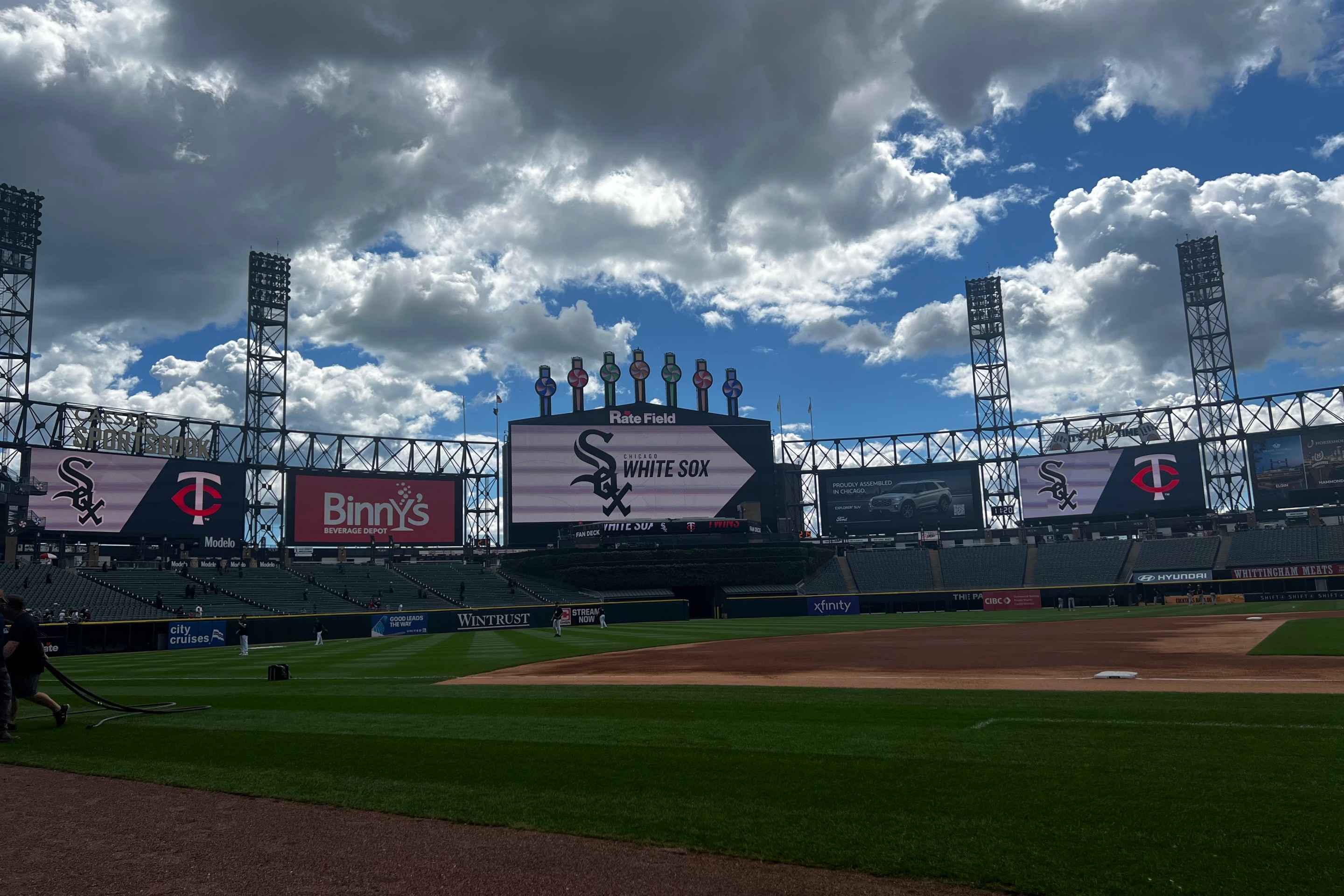Gavin Sheets' month of May kinda stunk. He hit .190/.316/.342 over 26 games with one home run.
But this is wholly separate from saying that Sheets stunk in May, because he rather admirably kept plugging along and doing his thing as good results temporarily abandoned him.
"I feel like it's the patience," said Andrew Vaughn of what's defined Sheets' season. "He's going up there free and taking really good at-bats."
Despite a rock-bottom .206 BABIP pushing him below the Mendoza Line for the month and a 33-game homer drought mixed in, Sheets walked (15) more than he struck out (12), and his chase rate for May (30 percent) remained lower than any of his previous seasons. For someone both searching for a turnaround season before his first year of salary arbitration, and filling the middle of the order for a team desperate for any kind of production, it takes an admirable amount of self-knowledge to stay the course.
"You've got to take what you're given at the plate," Sheets said. "Forcing to do things is never going to be the right answer. Getting on base and making guys pitch out of the stretch, that's just as good as driving the baseball. Sometimes you've got to just take what you get and stay disciplined to that."
One of my earlier interviews with Sheets was back in 2018 at Winston-Salem. He was installed in the middle of the batting order for a prospect-laden Dash team that finished 30 games over .500, and was unquestionably doing his part. Sheets hit .293/.368/.407 that season with dreamy strikeout-to-walk ratios and was among the league leaders in RBI.
But I was talking to him in late May and he was a first base prospect who had a zero in the home run column. When I asked him about it at the end of a long discussion of things he was doing well at the plate, he flashed the wry grin befitting someone who knew it was coming eventually. He answered patiently that he trusted the production would come through sticking to his approach, and preceded to whack his first two homers of that season during the two games I was in town to watch.
And so when I asked Sheets the weekend before last if he considered himself a power hitter or a hitter with power, his immediately reply of the latter could be seen coming from miles way.
"I like to use the whole field," Sheets said. "I feel like when I just try to hit solely for power, I get stuck in pull mode and lose everything. I stop hitting for power and I stop getting hits. So I like to use the whole field and be a line-drive guy who gets the ball in the air. Obviously the line drives have been really good for doubles, but I'd like to hit some more homers. But I think that comes."
Sheets has now homered four times in the last 12 games, boosting his season line to .246/.349/.436. In this offensive environment, that's a 125 wRC+ (overall offensive production 25 percent above league average), deserving of a place in the middle of most batting orders; not just for the worst offense in MLB. It's a high-water mark, but also befitting the components of his approach.
Per Statcast data housed on FanGraphs, his 28.2 percent chase rate is a career low. While it's merely league average, it lays bare his skill for contact, as his 7.9 percent swinging strike rate is also a career low. The label of "line-drive guy who gets the ball in the air" is underselling it, as his 33.1 ground ball rate is nearly 10 percentage points lower than league average, and speaks to how Sheets only has grounded into one double play all year despite his lack of speed.
Sheets has been good (.346 wOBA), but is doing such an exemplary job of maximizing what he needs to do to succeed, that Statcast estimators believe he should be one of the best hitters in the league (.373 xwOBA). Entering spring with Dominic Fletcher expected to dominate right field and Eloy Jiménez and Andrew Vaughn expected to soak up the 1B/DH, Sheets' route to playing time seem to be blocked. Now he's thriving with a prolonged opportunity to prove himself at 28 that only the White Sox were likely to offer. And since he didn't start a game in the opening series of the season, it was only offered after the level of carnage that has become common to White Sox seasons.
"He’s playing every day," said hitting coach Marcus Thames, echoing what Sheets has said on what's unlocked his play discipline. "He’s getting able to see more pitches. His on-base percentage is up there. When he comes to the ballpark, he knows he’s playing and as a player that means a lot.
"Him being able to be out there every day helps a lot. When the White Sox drafted him, he was a really good hitter. Coming up as a young guy, being up and down and not playing every day is tough. Now his eyes are good, so he’s being able to have good ABs on a daily basis."
Sheets felt that as much as his disparate opportunities last season were due to his struggles, his struggles worsened as he tinkered excessively to turn things around to maximize his sparse playing time. He doesn't expound a lot on mechanics, but the main benefit he touts from his offseason swing changes is that they allowed him to put the matter to bed by season's open, and focus solely on pitch selection and approach.
Similarly, Sheets takes a special satisfaction in breakthrough moments against left-handed pitching -- the bases-clearing triple against Keegan Akin, a sacrifice fly off lefty specialist Hoby Milner, the home run off Robert Gasser, Sunday's go-ahead single off Brennan Bernardino -- because they back up his central thesis: the more opportunities he gets to acclimate to same-handed pitching, the more he will produce.
"Those are at-bats I want. I like that they trust me with those and I'm coming through for them," Sheets said.
As Pedro Grifol offered without prompting on Sunday, this is a White Sox roster currently more likely to throw resources at avoiding a left-on-left matchup for Oscar Colás at the moment. But in both that application and writ large, a lack of better alternatives and unbreakable enduring trust can produce similar patterns of player usage.
Injuries and underperformance elsewhere have produced the sort of sustained opportunity that Sheets has long felt was crucial for his game to mature and thrive. Whether sticking with him regularly amid a poor May, or even rostering after a career-worst 2023 were the residue of design or not, he's answered with the best and most durable offensive production of his career.
Is there a lesson in all this, or just a new asset?






